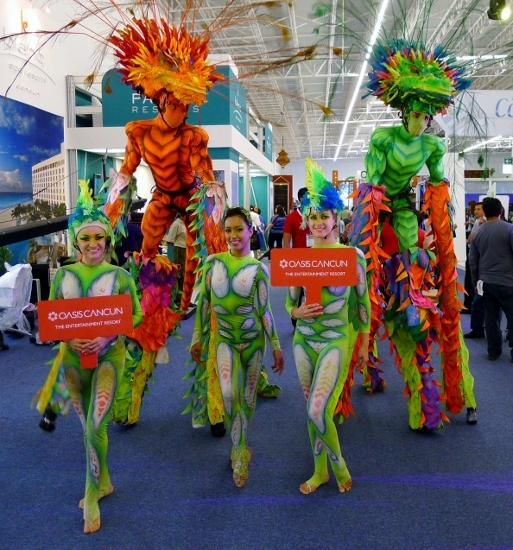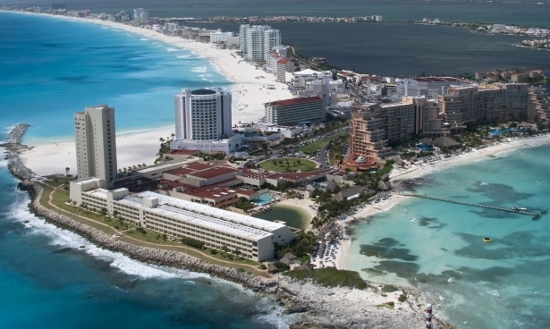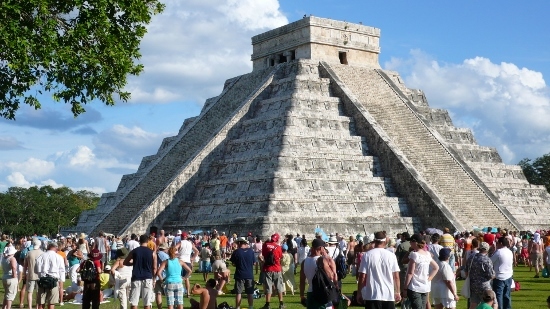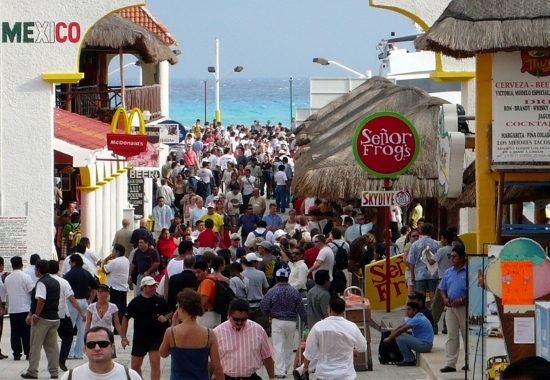
In late 1974, an eye-catching ad started popping up in newspapers and magazines for a place the readers likely never heard of. It showed a pristine, palm-lined beach mussed up only by a single line of footprints -- but without showing who made them -- moseying down the sands as far as you could see.
The headline read: "Walk in the Footsteps of Mayan Kings."
The ad (created by the era's super-agency Dancer, Fitzgerald, Sample) touted a new resort being built by the Mexican government on an island edging the country's Caribbean coast.
What prompted the Mexican feds and other investors to pump $100 million into a uninhabited strip of sand dunes and sagebrush way out in the middle of nowhere? The skinny little island didn't even show up on the maps.
A Computer Found It
The story goes back to 1969, when the Mexican government decided to jump start its, until then, rather modest tourism business. Mega-resorts -- built from scratch -- would be the name of the game. Miles of beaches would be lined with luxurious hotels built to look like tropical palaces. Airline flights from cities around the globe would make it easy to get there. And there'd be fun things to see and do for everyone, from bakers to bankers.

Dancers from Cancun liven up the Tianguis travel trade show in the state of Quintana Roo. Photo by Bob Schulman.
Named to spearhead the project was a new agency that came to be known as FONATUR, short for the Fondo Nacional de Fomento al Turismo (National Fund to Promote Tourism). It was staffed by experts in fields ranging from marketing to land management, backed up by economists, archaeologists, sociologists, entomologists and a few programmers for some newfangled machines called computers.
FONATUR's researchers scampered around the country for two years collecting data on fresh water sources, beach quality, ecological concerns and the like -- even insect populations -- from possible resort locations along 11,000 miles of beaches. The facts and figures went into a computer, and out came a number of top-rated sites. Heading the list was an island at the tip of eastern Mexico's Yucatan Peninsula. The local Mayans called it Kaank'uun.
Re-tagged with the more marketable name of Cancun, the resort began taking shape in 1972 as sand dunes and mangrove jungles gave way to roads, sidewalks, power lines, water systems and the first of two causeways linking the island to the mainland. The first hotel, the 70-room Playa Blanca (now the "topless optional" 384-room Temptation Resort Spa), opened in May 1974.
Fast-forward to year-end 1975, and "bienvenidos" signs are welcoming visitors to Cancun at an international airport, a marina, a golf course and at 10 hotels opened so far with several more in the works. Guests are flying in on two Mexican airlines from Mexico City, international passengers are arriving on the first scheduled flights from the U.S. (operated by Air France from New York) and a half-dozen U.S. carriers are awaiting the green light to serve Cancun.
By the end of the decade, as more and more hotels sprouted up -- many built to look like Mayan pyramids, Moorish castles and Andalusian palaces -- and as word spread about the natural beauty of the Cancun area and its fabulous, powdery white sand beaches, and about the wonders of the nearby Mayan archaeological sites, the resort was well on its way to making the "A" list of the country's top tourism draws.
Jump ahead to 1995, and the footsteps of Mayan kings are being filled by better than two million annual visitors, two-thirds from outside Mexico.
Today, with guests bedding down in over 150 hotels, all told with a whopping 31,000 rooms, Cancun is one of the most popular vacation getaways on the planet.
Cancun's Little Brother Grows Up
Cancun officially ends at Puerto Morelos, a speck on the map about 20 miles down the beach from the southern end of Cancun's 17-mile-long hotel strip. From the port (which could be the poster child for a sleepy Mexican fishing village) the highway runs down the Caribbean coast for another 70 or so miles. Along the way you'll spot sprawling hotel-resorts, Mayan-ish theme parks, diving and underground rafting sites, marinas, golf courses and the region's main city of Playa del Carmen (population: 200,000), perhaps best known for its usually jammed half-mile-long "Fifth Avenue" shopping lane.
Welcome to the Riviera Maya. Just 20 years ago, it was eastern Mexico's new kid on the beach, sprouting up in the shadow of Cancun. Early on, before marketers cooked up the Riviera name, developers had built a few secluded hideaways here and there for divers, nature lovers, just plain lovers and archaeologists heading to the ruins of Mayan cities such as Tulum, Coba and Chichen Itza.
Today, fun-in-the-sun-loving tourists and wannabe archaeologists alike are bedding down in some 41,000 rooms in 385 hotels along the powdery beaches of the Riviera.
Together, Cancun and the Riviera Maya host well over eight million guests a year.


